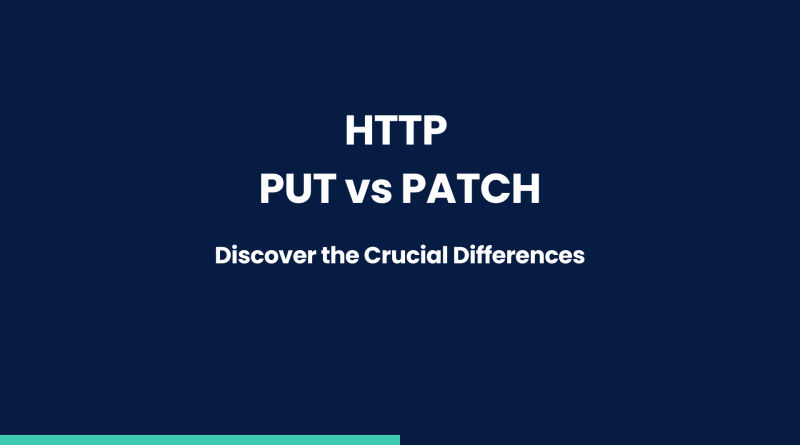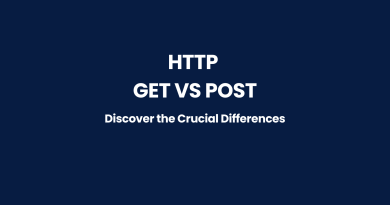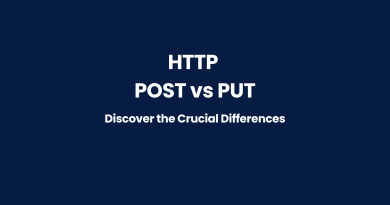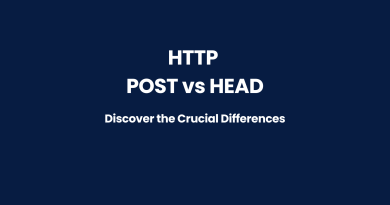HTTP PUT vs PATCH: Discover the Crucial Differences
In this blog post, we will focus on two HTTP methods that are commonly used for updating resources: PUT and PATCH. These methods may seem similar at first, but they have crucial differences in their behavior and use cases. By the end of this article, you will have a clear understanding of these methods and be able to make more informed decisions in your API design.
Definition and Purpose of HTTP PUT
HTTP PUT is a method that allows you to update a resource on the server by replacing its entire content with the new data provided in the request. In other words, when you use PUT, you are essentially overwriting the existing resource with a new version. This method is particularly useful when you need to update a resource with an entirely new set of data or when you have all the information required to create a complete and accurate representation of the resource.
Definition and Purpose of HTTP PATCH
HTTP PATCH is another method designed for updating resources, but unlike PUT, it allows you to make partial updates by modifying specific elements of a resource without affecting the others. This method is especially helpful when you need to make small changes or updates to a resource without requiring the entire data set to be sent in the request.
Key Differences between PUT and PATCH
Now that we have a foundational understanding of both PUT and PATCH methods, let’s explore the key differences between them, which will help you make informed decisions when designing your APIs.
Idempotency
One of the most critical differences between PUT and PATCH is their idempotency. PUT is idempotent, which means that making multiple identical requests with the same data will have the same effect as making a single request. On the other hand, PATCH is non-idempotent, implying that making multiple identical requests may lead to different outcomes, as each request could potentially apply changes cumulatively.
Understanding the idempotency of these methods is essential, as it impacts the reliability and error handling of your API.
Update Type (Complete vs Partial)
As mentioned earlier, PUT is used for complete updates, where the entire resource is replaced with the new data provided in the request. In contrast, PATCH is used for partial updates, allowing you to modify specific parts of a resource without affecting the remaining content.
The update type you choose will depend on the nature of the update and the requirements of your application.
Performance and Efficiency
When considering performance and efficiency, PATCH can be more efficient for large resources or when only small portions of data need to be updated. Since PATCH allows you to send only the changes, it reduces the amount of data transmitted and processed. Conversely, PUT requires you to send the entire resource in the request, which can be less efficient for large resources or minor updates.
Error Handling and Potential Conflicts
Error handling and potential conflicts also differ between PUT and PATCH. Due to its idempotent nature, PUT can be more predictable when handling errors, as multiple identical requests will yield the same result. However, with PUT, there’s a risk of unintentionally overwriting data if multiple clients update the same resource simultaneously.
On the other hand, PATCH’s non-idempotent behavior can make error handling more complex, as the outcome of multiple identical requests may not be the same. However, PATCH provides more granular control over updates, which can help minimize conflicts and ensure that specific changes are applied correctly.
Choosing Between PUT and PATCH
Now that you understand the key differences between PUT and PATCH, you might be wondering how to choose the right method for updating resources in your API. In this section, we will provide some guidelines to help you make an informed decision.
Evaluating the Nature of the Update
The first step in choosing between PUT and PATCH is evaluating the nature of the update. If you need to update the entire resource with a new set of data, PUT is the appropriate choice. On the other hand, if you only need to modify specific parts of the resource without affecting the rest, PATCH is the way to go.
Assessing the Need for Idempotency
Another crucial factor to consider is the need for idempotency in your application. If it’s essential to ensure that multiple identical requests have the same effect as a single request, PUT is the better option due to its idempotent nature. If idempotency is not a critical concern, and you’re looking for more granular control over the updates, PATCH might be a better fit.
Considering Potential Issues and Trade-offs
Finally, consider the potential issues and trade-offs associated with each method. PUT can be less efficient for large resources or minor updates, and there’s a risk of unintentionally overwriting data in simultaneous updates. PATCH, on the other hand, offers better efficiency for large resources or small updates but can have more complex error handling due to its non-idempotent behavior.
See Also
HTTP POST Method: Comprehensive Guide
HTTP PUT Method: Comprehensive Guide
HTTP DELETE Method: Comprehensive Guide
HTTP HEAD Method: Comprehensive Guide
HTTP OPTIONS Method: Comprehensive Guide



